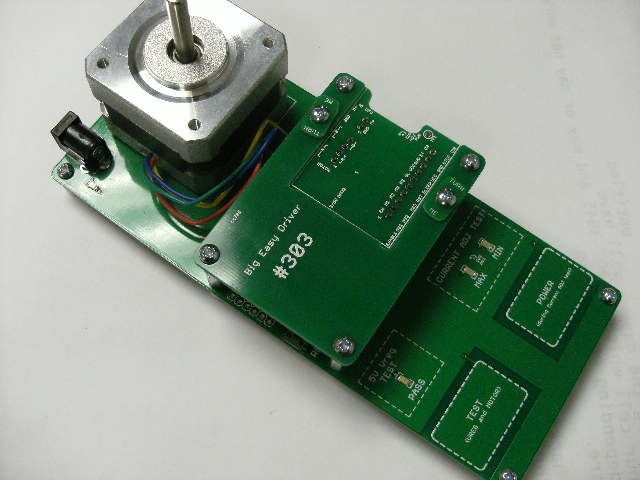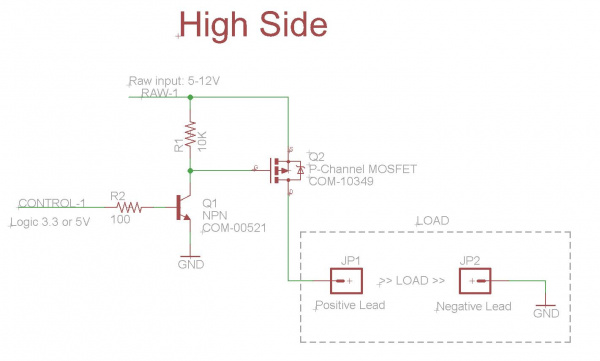Constant Innovation in Quality Control
The High Side Switch
In order to more safely control the power to a board under test, we now use something called a high side switch. This improvement to our testbeds allows us to actively control the power we supply to a board.
Before this innovation, the pogopins on the testbed were always supplying power. We will sometimes call this a "hot" pogopin. Also, the act of swapping out boards on a testbed with this kind of hardware is called "hot swapping". This method of supplying power to the board under test is usually okay for really low power products, and there are still a large number of testbeds on our production floor that have hot pins. However, when you are dealing with higher current devices, it can become rather dangerous.
The first product that received this upgrade was the Big Easy Driver. This board, like most stepper motor drivers, requires a substantial amount of current. The original testbed had hot pogopins and so would sometimes lead to damaging the board under test and/or the testbed itself.
Unfortunately, I was unable to dig up a decent picture of the original testing hardware. But I was able to get the most recent version:
Notice how there are cap-sense buttons for the technician to engage the test. When he or she presses this button, it will first turn on the high side switch (powering the board under test) and then engage the test. This ensures that the tech does not press a board down on hot pogopins.
Another issue that occurs with hot swapping is the possibility of momentary, accidental shorts. When a technician places a board down onto a testbed, sometimes they may accidentally slide the board horizontally. If VCC and GND are positioned next to each other on the board design (which often is the case), then this can cause a short between them for a small instance. This can cause large spikes in current and be damaging to the board and testbed. Using a high side switch helps avoid the possibility of these accidental shorts.
The circuit of a high side switch is actually quite similar to our MOSFET Power Control Kit. Below is a schematic view of our high side switch template:

